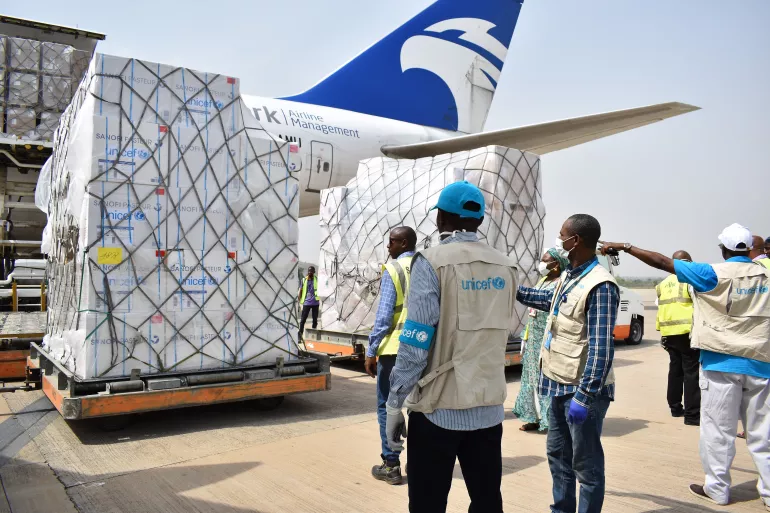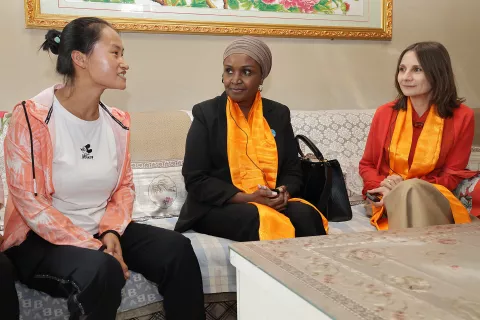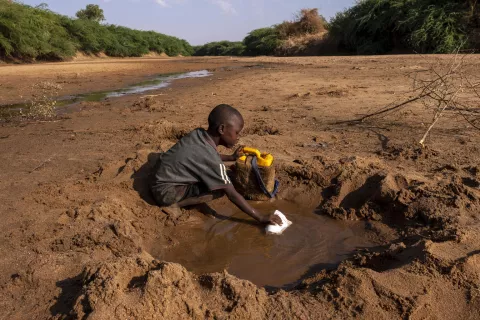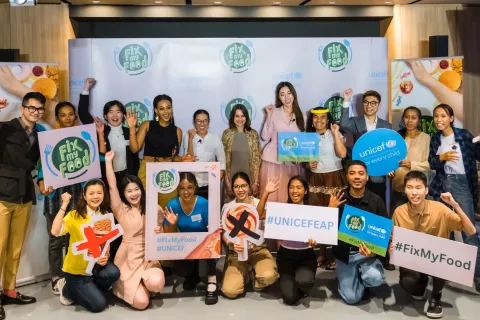Despite disruptions, UNICEF delivers critical life-saving supplies to over 100 countries in response to the COVID-19 pandemic
In 2019, UNICEF procured a record US$3.826 billion in goods and services for children in 150 countries and saved US$363.3 million for governments and donors by leveraging its purchasing power and strategic procurement approaches, in collaboration with pa

- Available in:
- 中文
- English
NEW YORK/COPENHAGEN, 26 June 2020 – With the COVID-19 pandemic upending the lives of millions of children around the world, UNICEF is delivering life-saving supplies despite unprecedented transport and logistical constraints caused by the COVID-19 pandemic.
“From supply shortages to transport constraints, COVID-19 has brought enormous challenges to our supply operations,” said UNICEF Executive Director Henrietta Fore. “However, with support from our partners, we were able to meet some of the most pressing needs and keep children and communities safe.”
So far this year, UNICEF has shipped key personal protective equipment (PPE) supplies to over 100 countries to support their response to the pandemic, including 7.5 million surgical masks, 2.8 million N95 respirators, nearly 10 million gloves, over 830,000 gowns, and nearly 600,000 face shields. UNICEF also shipped over 550,000 diagnostic tests, with an additional 912,000 planned to be delivered through August and is sending over 16,000 oxygen concentrators to 90 low- and middle-income countries.
Limited availability of commercial flights has also taken a heavy toll on shipments of supplies for regular programmes. From March – May in a typical year, UNICEF would have made more than 700 vaccine shipments to countries. During the same period in 2020, just over half that amount – 391 shipments – took place.
To address vaccine shipment challenges, UNICEF is appealing to governments, the private sector, the airline industry and others, to provide solutions for freight space at an affordable cost for life-saving vaccines. For example, a recent charter pooled what would have been separate vaccine shipments into one, making eight stops in West African countries that would otherwise be hard to reach.
UNICEF’s COVID-19 response builds on a strong year for its supply operations in 2019, when UNICEF’s procurement of supplies and services reached a record level of US$3.826 billion, representing a nearly 10 per cent increase from 2018 levels. Over one-third of the total procurement was for vaccines at US$1.656 billion, accounting for 2.43 billion doses for nearly 100 countries to reach 45 per cent of the world’s children under five years of age.
UNICEF also exceeded its savings target for 2019 by over 35 per cent, achieving US$363.3 million in savings across a range of products by leveraging strategic procurement approaches.
“Our collaboration with national governments, partners and the private sector is vital to our efforts to reach children with the supplies they need,” said Etleva Kadilli, Director of the UNICEF supply and procurement headquarters. “Through our global reach and innovative approaches, we leverage our purchasing power and achieve significant savings for governments and donors. As we work together to respond to the COVID-19 pandemic, this approach becomes even more important to maximize each dollar spent so that regular programmes can be maintained, as countries also scale up COVID-19 response efforts.”
The 2019 Supply Annual Report released today highlights a variety of examples of how UNICEF scaled up its supply and logistics operations to meet the evolving needs of children and families around the world. These range from championing efforts to bring new products to market, to harnessing technology to streamline supply operations, and using special financing tools to support governments to deliver supplies. Examples include:
- Scaling-up vaccine procurement in an evolving landscape of supply and demand, and the cold chain equipment infrastructure required to keep vaccines safe;
- Pre-financing tools to support countries utilizing domestic resources to deliver supplies to children on time;
- A mobile phone app that uses real-time data to facilitate a faster delivery and improved management of supplies for UNICEF staff;
- The recycling of steel from end-of-life ships to build longer-lasting, quality learning centres for refugee children in Bangladesh;
- High Performance Tents used for humanitarian responses to support essential services in education, health, nutrition and child protection.
The report also highlights how UNICEF scaled up health emergency preparedness following the 2014–2016 Ebola outbreak in West Africa to strengthen its supply response in health emergencies. This experience helped shape the organization’s response to the COVID-19 emergency.
Notes for editors
Download photos and broll here, including on emergency supplies for COVID-19.
More information on how UNICEF has made a difference in the lives of children in 2019 can be found in the 2019 Supply Annual Report.
UNICEF’s long-term work for children around the world is made possible thanks to partners, supporters and donors. For more information on UNICEF’s work to provide access to life-saving products where they are most needed, visit https://www.unicef.org/supply/
Media contacts
About UNICEF
UNICEF works in some of the world's toughest places, to reach the world's most disadvantaged children. Across 190 countries and territories, we work for every child, everywhere, to build a better world for everyone.
| Visit UNICEF Global website: www.unicef.org Visit UNICEF China website: www.unicef.cn Follow us on Sina Weibo: http://weibo.com/unicefchina Tencent Weibo: http://t.qq.com/unicef Wechat: unicefchina |




